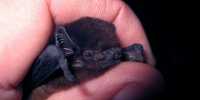It’s one of the most startling bits of South American lore: don’t stop to relieve yourself in a river, since a fish may swim up your pee stream and shoot itself into your urethra, according to folklore. It’s difficult to get rid of it without a complete amputation of the penis, which you should perform as soon as possible before the invader eats through your internal mucous membranes or lays eggs in your bladder. It’s terrible, but is it necessary? Is it really necessary to be concerned about the “vampire fish,” “toothpick fish,” or (to use a less spectacular moniker) the candiru?
WHAT DOES A “PENIS FISH” MEAN? Apart from the term “Amazonian penis-invading fish,” the first sign that something isn’t quite right with the Amazonian penis-invading fish legends is undoubtedly the fact that the first Europeans to describe the animal scarcely appear to agree on what it looks like.
In a 2013 review study on the semi-mythical ichthyoid, Irmgard Bauer, Adjunct Senior Lecturer at James Cook University’s College of Healthcare Sciences, says, “The taxonomy of South American catfishes is complicated, often changed, and looks, at times, disputed.” “To compound the difficulty, explorers had to name each species they came across separately due to a dearth of reference literature. “It’s often unclear whether they’re talking about the same fish,” she says, “particularly when the descriptions and sizes of the fish vary greatly.”
“The lack of agreement is hardly surprising, given the similarities of many species and the early explorers’ lack of sufficient instruments to discriminate between them… Typically, fish [specimens] were stored in whatever grog was available and degraded to the point where they could no longer be characterized.”
The candiru is a sort of catfish, therefore it’s absolutely a genuine fish. They’re usually rather little, which makes sense if you’re going to say it can go up a penis, measuring around 17 centimeters (7 inches) without the tail. Vandellia cirrhosa, the variety of candiru most commonly associated with the penis-eating fish, is much smaller, measuring about 3 to 5 centimeters (1.2 to 2 inches) in length. They are also deserving of some of their terrible reputation.
They’re parasitic fish that feed on the blood of their victims, who are usually other catfish. What’s the takeaway? “You shouldn’t shop from a catalog,” says the author “Elinor Karlsson, the study’s director of vertebrate genomics at the Broad Institute, told Science. “”Each dog is a one-of-a-kind creature.”














